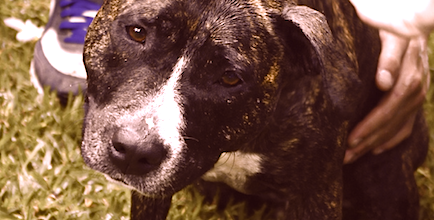Can Dogs Eat Bread? Everything You Need To Know.
Key Points: Bread: that comforting, doughy staple found in many households worldwide. But as a dog owner, you might be wondering if your furry friend can indulge in this common human food. Let’s explore the question, “Can dogs eat bread?” and discover the dos and don’ts when it comes to sharing this treat with your…

- Yes, dogs can eat plain bread in moderation as an occasional treat.
- Plain bread offers carbohydrates for quick energy and a bit of fiber for digestion, especially if it’s whole grain.
- Always avoid breads with harmful additives like garlic, onions, raisins, or raw dough to keep your pup safe and healthy.
Bread: that comforting, doughy staple found in many households worldwide. But as a dog owner, you might be wondering if your furry friend can indulge in this common human food. Let’s explore the question, “Can dogs eat bread?” and discover the dos and don’ts when it comes to sharing this treat with your four-legged companion.
So can dogs eat bread? Yes, dogs can eat bread in moderation without posing an immediate threat to their health. However, there are important factors to consider before handing over a slice of this carb-filled delight to your canine companion.
Let’s delve into the nutritional aspects and precautions associated with feeding bread to dogs.
- The Nutritional Value of Bread
- The Benefits of Bread for Dogs
- Safety Considerations When Feeding Bread to Dogs
- Which Dogs Should Avoid Bread?
- Could My Dog Be Allergic to Bread?
- So, Can My Dog Eat Bread?
- How Much Bread Can a Dog Eat?
- What If My Dog Has Eaten Too Much Bread?
- Serving Bread to Your Dog
- What Types of Bread Should I Avoid?
- Which Types of Bread are Generally Safe?
- Can Dogs Eat Bread Crust?
- Can Dogs Eat Bread Dough?
- Can Dogs Eat Breadsticks?
- Can Dogs Eat Breadcrumbs?
- Can Dogs Eat Bread with Butter?
- Can Dogs Eat Bread with Peanut Butter?
- Can Dogs Eat Crackers?
- Frequently Asked Questions (FAQ)

Don’t leave your pet’s safety to chance
Sign up for Petful recall alerts today.

The Nutritional Value of Bread
Before we discuss how dogs can enjoy bread, let’s take a moment to understand the nutritional profile of this common human food:
- Carbohydrates: Bread primarily consists of carbohydrates, which provide a quick source of energy.
- Fiber: Some types of bread, like whole wheat or whole grain, contain dietary fiber, which can support digestive health.
- Protein: Bread contains a small amount of protein, but it’s not a significant source of this essential nutrient.
- Fats: Most breads have minimal fat content.
The Benefits of Bread for Dogs
While bread isn’t a superfood for dogs, there are a few potential benefits to offering it in moderation:
- Digestive Health: Whole wheat or whole grain breads can provide dietary fiber, which may help regulate bowel movements and support digestive health in dogs.
- Energy Boost: Carbohydrates in bread can provide a quick energy boost, which might be beneficial for active dogs or those engaged in physical activities.
Safety Considerations When Feeding Bread to Dogs
While bread is generally safe for dogs, there are some important safety considerations to keep in mind:
- Plain Bread: If you’re sharing bread with your dog, opt for plain varieties without added ingredients like raisins, nuts, seeds, or spices. Some of these additives can be toxic to dogs.
- No Garlic or Onions: Avoid bread that contains garlic or onions, as these ingredients can be harmful to dogs, potentially leading to digestive upset or more serious health issues.
- Moderation: As with any treat, bread should be given in moderation. It should not replace your dog’s regular meals but rather complement them.
- Dog Size Matters: Smaller dogs should receive smaller portions of bread, while larger dogs can have slightly larger servings, always within the moderation guidelines.
Which Dogs Should Avoid Bread?
While bread is generally safe for most dogs, there are some situations in which you should exercise caution or avoid it altogether:
- Dogs with Food Allergies or Sensitivities: If your dog has known food allergies or sensitivities, introduce bread carefully and monitor for any adverse reactions, such as skin issues or digestive upset.
- Dogs with Diabetes or Blood Sugar Issues: If your dog has diabetes or blood sugar regulation issues, be mindful of their bread intake, as carbohydrates can affect blood glucose levels.
- Dogs Prone to Pancreatitis: While bread is not typically high in fat, any new food can potentially trigger pancreatitis in susceptible dogs. Introduce bread gradually and observe for any adverse reactions.
- Overweight Dogs: Because bread has no significant nutritional value, it is best to skip this as a treat. Obesity in dogs can lead to joint problems, diabetes, and a shortened lifespan.
Could My Dog Be Allergic to Bread?
Yes, although it’s uncommon, dogs can be allergic or intolerant to any food, including bread. Food allergies in dogs can manifest in various ways, ranging from gastrointestinal symptoms to skin-related issues.
Symptoms of a Bread Allergy or Intolerance in Dogs:
- Skin Issues: Itchiness, hives, redness, or rashes can be signs of an allergic reaction. The dog might scratch or lick excessively, especially around the paws, ears, or face.
- Digestive Upset: Vomiting or diarrhea might occur if a dog is intolerant or allergic to bread.
- Facial Swelling: Swelling around the eyes, lips, ears, or throat can indicate an allergic reaction.
- Coughing or Difficulty Breathing: These could be signs of a severe allergic reaction, especially if there’s swelling in the throat.
- Chronic Ear Infections: If a dog repeatedly gets ear infections, it might be a sign of an underlying food allergy.
• Behavioral Changes: Some dogs might become lethargic, anxious, or exhibit other changes in behavior when experiencing discomfort or an allergic reaction.
What to Do if You Suspect an Allergy:
- Remove the Allergen: If you believe bread is causing the issue, stop feeding it to your dog and avoid any treats or foods that contain it.
- Consult Your Veterinarian: If your dog shows symptoms of an allergic reaction, it’s essential to consult with a veterinarian. They can provide guidance on treating the immediate symptoms and discuss potential allergy tests or dietary changes.
- Allergy Testing: If the allergic reactions are recurring and the cause isn’t clear, your vet might recommend an allergy test to identify the specific allergens affecting your dog.
- Monitor for Cross-Contamination: Ensure that other foods or treats aren’t contaminated with bread if you believe it’s causing an allergic reaction.
Remember, while it’s relatively rare for dogs to be allergic to bread, it’s always good to introduce any new food gradually and monitor your dog for any adverse reactions.
So, Can My Dog Eat Bread?
Yes, your dog can enjoy bread as an occasional treat when introduced responsibly and in moderation. However, it’s crucial to choose plain bread without harmful additives and to consider your dog’s size and individual dietary needs. Remember that bread should be just a small part of your dog’s overall diet.
How Much Bread Can a Dog Eat?
Bread can be a safe and occasional treat for dogs, providing carbohydrates and some fiber. However, it’s essential to monitor the quantity given, as treats, including bread, should only make up a small portion of a dog’s daily diet to maintain their overall health.
When offering bread to dogs, make sure it’s plain, free from additives like garlic, onions, raisins, or seeds, which can be harmful to them. It should only be served as an occasional snack, no more than one or two times a week.
The appropriate amount of bread a dog can consume varies by size and individual health needs. Here’s a general guideline for offering bread to dogs based on their size:
- Small Dogs (e.g., Chihuahua, Dachshund): About the size of a postage stamp or a small crouton.
- Medium Dogs (e.g., Beagle, Border Collie): A piece about the size of a thumb or a few small bite-sized pieces.
- Large Dogs (e.g., Labrador, Golden Retriever): A piece about the size of two thumbs or a small slice.
- Giant Dogs (e.g., Great Dane, Saint Bernard): A larger slice, about the size of three thumbs.
If your dog has never had bread before, start with a small amount and observe for any adverse reactions before offering more. And remember, bread should not replace your dog’s regular meals but should be given as an occasional addition to their diet.
What If My Dog Has Eaten Too Much Bread?
If your dog has consumed an excessive amount of bread, it’s essential to observe their behavior and be on the lookout for any signs of digestive upset or unusual behavior. While bread is generally safe for dogs, overindulgence can potentially cause issues.
Possible Immediate Symptoms of Overconsumption:
- Diarrhea: This is one of the most common symptoms if a dog overindulges in any food, including bread.
- Vomiting: Some dogs might vomit if they’ve eaten too much bread or ate it too quickly.
- Stomach Discomfort: The dog might show signs of discomfort, like whining, laying in an unusual position, or being less active.
What to Do:
- Stay Calm: Panicking won’t help the situation. Take a deep breath and focus on observing your dog and determining the best next steps.
- Do Not Induce Vomiting Unless Advised: It’s essential not to induce vomiting unless explicitly advised to do so by a veterinarian.
- Contact Your Veterinarian: If your dog is showing signs of distress or discomfort, it’s a good idea to get in touch with your veterinarian. They can provide guidance based on the amount consumed and your dog’s size and health.
- Monitor Your Dog: Even if your dog seems fine, keep a close eye on them for the next 24-48 hours. Look for any delayed symptoms or changes in behavior.
In most cases, if a dog has eaten too much bread, they will experience mild digestive upset, and the symptoms will pass on their own. However, if the dog consumed an extremely large quantity or if they’re showing severe symptoms, it’s crucial to seek veterinary attention.
Serving Bread to Your Dog
Now that you know the benefits and precautions, let’s explore some ways to serve bread to your furry friend:
- Plain Bread: Offer small pieces of plain bread as an occasional treat. Make sure it’s free from harmful additives and seasonings.
- Toasted Bread: Lightly toast a small portion of bread and let it cool before offering it to your dog. Some dogs may prefer the crunchiness of toasted bread.
- Bread Cubes: Cut plain bread into small, bite-sized cubes for easy snacking.
- Bread as a Pill Holder: If your dog needs to take medication, you can hide pills in small pieces of bread to make it more palatable.
- Bread with Toppings: If you’re feeling creative, you can add dog-safe toppings like peanut butter (xylitol-free), plain yogurt, or mashed banana to plain bread for an extra special treat.
- Bread Training Treats: Use small pieces of plain bread as training treats. It can be a handy and inexpensive option for training sessions.
What Types of Bread Should I Avoid?
When offering bread to your dog, it’s crucial to avoid certain types or varieties that can be harmful to them:
- Bread with Harmful Additives: Avoid bread that contains ingredients like garlic, onions, raisins, nuts, seeds, or spices, as these can be toxic to dogs.
- Moldy Bread: Moldy bread should never be given to dogs, as it can contain mycotoxins that are harmful to their health.
- Bread with Xylitol: Xylitol is a sugar substitute commonly used in some types of bread and baked goods. It’s highly toxic to dogs and can cause severe health issues or even be fatal.
- Sugary Bread: Bread with added sugars or sweeteners should be avoided, as excessive sugar intake can lead to obesity and other health problems in dogs.
Here’s a short list of breads that are best to avoid or be cautious with:
- Garlic Bread
- Bread with Seeds
- Pastries
- Focaccia
- Brioche
- Banana bread
- Challah
- Cornbread
- Soda Bread
- Rye and Pumpernickel
Which Types of Bread are Generally Safe?
While you should always proceed with caution and check the ingredients list before introducing your dog to bread, here are a few that usually are made from only dog-safe ingredients:
- White Bread
- Baguette
- Whole Wheat Bread
- Ciabatta
- Potato Bread
- Naan
- Tortilla
- Lavash
Can Dogs Eat Bread Crust?
Many dogs enjoy the taste and texture of bread crust, and in most cases, it’s safe for them to consume. Bread crusts typically don’t contain harmful ingredients, as long as they are plain and free from additives like garlic, onions, raisins, or seeds.
When offering bread crusts to your dog, it’s essential to break them into smaller, manageable pieces to prevent choking hazards, especially for smaller dogs. Additionally, ensure that the crusts are not moldy or spoiled, as mold can be harmful to dogs.
As with any treat, bread crusts should be given in moderation and should not replace your dog’s regular meals. Keep an eye on your dog for any adverse reactions, especially if it’s their first time trying bread crusts.
Can Dogs Eat Bread Dough?
No, dogs should not consume bread dough, whether raw or partially baked. Raw bread dough can pose serious health risks to dogs for several reasons:
- Yeast Fermentation: Bread dough contains yeast, which can continue to ferment and expand in a dog’s stomach. This can lead to painful bloating and potentially life-threatening gastric torsion (also known as twisted stomach or bloat).
- Alcohol Production: As yeast ferments, it produces alcohol as a byproduct. Ingesting raw dough can cause alcohol poisoning in dogs, which can result in symptoms like disorientation, vomiting, loss of coordination, and, in severe cases, coma or death.
- Obstruction Risk: The expanding dough can cause an obstruction in the dog’s digestive tract, leading to abdominal pain, vomiting, and the need for surgical intervention.
- Sugar Content: Some bread dough recipes may contain added sugars, which can be harmful to dogs, especially in large quantities.
If your dog has ingested raw bread dough, it’s essential to seek immediate veterinary attention. The veterinarian will assess the situation and may take measures to prevent complications, such as inducing vomiting or performing surgery if an obstruction has occurred.
Can Dogs Eat Breadsticks?
Plain breadsticks, without harmful additives or ingredients, can be a safe occasional treat for dogs. However, it’s important to ensure that the breadsticks are not overly salty or seasoned, as excessive salt intake can be harmful to dogs.
When offering breadsticks to your dog, break them into smaller, manageable pieces to prevent choking hazards. Additionally, be mindful of the quantity you offer, as treats should only make up a small portion of your dog’s daily diet.
As always, monitor your dog for any adverse reactions when introducing a new treat, and consult with your veterinarian if you have any concerns about your dog’s dietary choices.
Can Dogs Eat Breadcrumbs?
Plain breadcrumbs, without added seasonings or harmful ingredients, are generally safe for dogs to consume in small amounts. They can be used as a topping or addition to your dog’s regular food to add texture and flavor.
When offering breadcrumbs to your dog, use them sparingly and as a supplement to their balanced diet. Breadcrumbs should not replace your dog’s primary source of nutrition, which should come from high-quality dog food.
As with any treat or addition to your dog’s diet, monitor for any adverse reactions and consult with your veterinarian if you have any concerns about your dog’s dietary choices.
Can Dogs Eat Bread with Butter?
Plain bread with a small amount of unsalted butter can be safe for dogs in moderation. However, it’s important to exercise caution and consider a few key points:
- Limit Butter: Butter should be offered in small quantities, as it is high in fat and calories. Excessive fat intake can lead to obesity and other health issues in dogs.
- Choose Unsalted Butter: Opt for unsalted butter to avoid excess sodium, which can be harmful to dogs.
- Monitor for Digestive Upset: Some dogs may have sensitive stomachs and can experience digestive upset when introduced to high-fat foods. Monitor your dog for any signs of discomfort or diarrhea.
- Avoid Bread with Additives: Ensure that the bread used is plain and free from harmful additives or ingredients like garlic, onions, raisins, or seeds.
- Introduce Gradually: If your dog has never had bread with butter before, start with a small amount and observe for any adverse reactions.
Remember that bread with butter should only be an occasional treat and should not replace your dog’s regular meals. Additionally, consult with your veterinarian if you have any concerns about your dog’s dietary choices or if they have specific dietary restrictions or health conditions.
Can Dogs Eat Bread with Peanut Butter?
Bread with peanut butter can be a tasty and enjoyable treat for many dogs, but there are some important considerations:
- Peanut Butter Quality: Use plain, unsalted peanut butter without added sugars or artificial sweeteners. Avoid peanut butter that contains xylitol, as it is toxic to dogs.
- Portion Control: Peanut butter is calorie-dense, so use it sparingly. A small amount spread on a slice of bread or offered as a filling in a Kong toy can be a satisfying treat.
- Monitor Allergies: While peanut allergies in dogs are relatively rare, it’s possible for some dogs to be allergic or intolerant to peanuts. Monitor your dog for any signs of allergic reactions, such as itching, hives, or digestive upset.
- Avoid Bread with Harmful Ingredients: Ensure that the bread used is plain and free from harmful additives or ingredients like garlic, onions, raisins, or seeds.
- Choking Hazard: For smaller dogs or those prone to choking, consider breaking the bread into smaller pieces or using a thin layer of peanut butter to prevent choking hazards.
- Nutritional Balance: Bread with peanut butter should be considered a treat and should not replace your dog’s regular meals. Maintain a balanced diet for your dog.
Overall, bread with plain, unsalted peanut butter can be a delightful occasional treat for dogs, but it should be given in moderation and as part of a well-balanced diet.
Can Dogs Eat Crackers?
Yes, dogs can generally eat plain crackers in moderation, but it’s essential to ensure that the crackers do not contain harmful ingredients. Crackers, like bread, primarily consist of carbohydrates and do not offer substantial nutritional benefits for dogs. However, they can be given as an occasional treat. Here are a few considerations when giving crackers to dogs:
Safe for Dogs:
- Plain Crackers: Unsalted and unflavored crackers are generally safe for dogs in small quantities.
Considerations:
- Salt Content: Many crackers are high in salt, which can be unhealthy for dogs. Choose low-sodium or unsalted options.
- Seasonings and Additives: Avoid crackers with onion, garlic, artificial sweeteners (especially xylitol), or other harmful additives.
- Portion Control: Crackers should only make up a small part of a dog’s daily caloric intake.
- Allergies or Sensitivities: Be cautious with dogs that have known food allergies or sensitivities.
- Nutritional Content: Crackers are not a significant source of nutrition for dogs, so they should not replace a balanced diet.
Caution:
- Flavored Crackers: Many flavored crackers contain ingredients that can be harmful to dogs, such as onion powder, garlic powder, or artificial additives.
- High Fat or Sugar Content: Some crackers, especially sweet varieties, may contain high levels of fat or sugar, which are not suitable for dogs.
Frequently Asked Questions (FAQ)
Is it bad for dogs to eat bread?
Plain bread is not toxic to dogs, but it offers little nutritional value and is high in carbohydrates, which can contribute to weight gain if eaten regularly. Some breads contain harmful ingredients like raisins, garlic, or xylitol, which are toxic to dogs.
How many slices of bread can a dog eat?
A small dog can have a bite or two, while a larger dog can eat up to half a slice occasionally. Too much bread can lead to bloating, digestive issues, or unnecessary calorie intake.
Is bread good for dogs with upset stomachs?
Plain white or whole wheat bread can help absorb stomach acid and provide temporary relief for mild stomach upset, but it should not be a long-term solution. If your dog frequently has digestive issues, consult a veterinarian for a proper diet plan.
Is bread and butter ok for dogs?
Bread with a small amount of unsalted butter is not toxic but is not recommended, as butter is high in fat and can lead to digestive upset or contribute to pancreatitis over time. Flavored or seasoned butters may contain harmful ingredients, so it’s best to avoid them.
Can dogs eat bread crust?
Yes, dogs can eat plain bread crust in moderation, as long as it doesn’t contain harmful ingredients like garlic, onions, or seeds. However, crusts are still just as high in carbs as the rest of the bread and should only be given as an occasional treat.
Curious about what other foods dogs can eat? Check out these related articles below:







